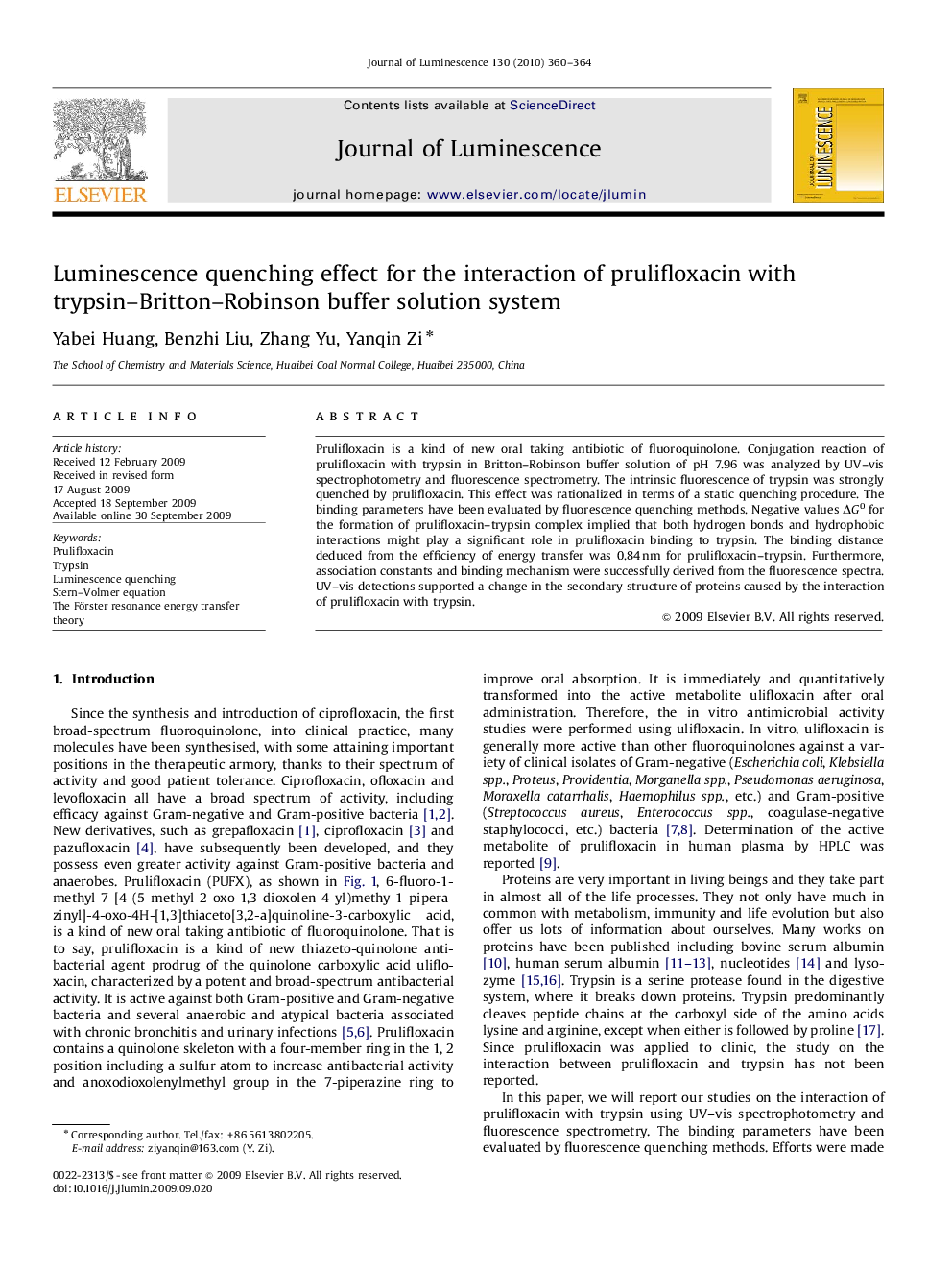| Article ID | Journal | Published Year | Pages | File Type |
|---|---|---|---|---|
| 5402799 | Journal of Luminescence | 2010 | 5 Pages |
Abstract
Prulifloxacin is a kind of new oral taking antibiotic of fluoroquinolone. Conjugation reaction of prulifloxacin with trypsin in Britton-Robinson buffer solution of pH 7.96 was analyzed by UV-vis spectrophotometry and fluorescence spectrometry. The intrinsic fluorescence of trypsin was strongly quenched by prulifloxacin. This effect was rationalized in terms of a static quenching procedure. The binding parameters have been evaluated by fluorescence quenching methods. Negative values ÎG0 for the formation of prulifloxacin-trypsin complex implied that both hydrogen bonds and hydrophobic interactions might play a significant role in prulifloxacin binding to trypsin. The binding distance deduced from the efficiency of energy transfer was 0.84Â nm for prulifloxacin-trypsin. Furthermore, association constants and binding mechanism were successfully derived from the fluorescence spectra. UV-vis detections supported a change in the secondary structure of proteins caused by the interaction of prulifloxacin with trypsin.
Related Topics
Physical Sciences and Engineering
Chemistry
Physical and Theoretical Chemistry
Authors
Yabei Huang, Benzhi Liu, Zhang Yu, Yanqin Zi,
